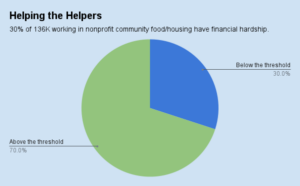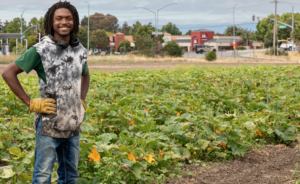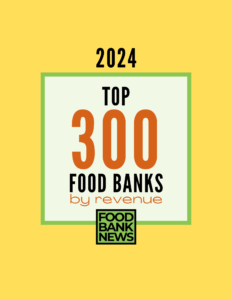Offering culturally familiar meals to immigrant populations has been expensive, operationally challenging, and not always in line with client expectations. Even so, Open Arms of Minneapolis is fully committed to continuing to serve the meals.
“There has to be an organizational commitment where you just say, ‘Yep, we’re gonna do this,’” said Leah Herbert Welles, CEO of Open Arms, which serves about 1.5 million medically tailored meals a year with the help of about 7,000 volunteers. She spoke recently at a webinar hosted by Root Cause Coalition.

Open Arms’ foray into making some meals culturally familiar began about 11 years ago when Welles arrived at the organization and almost immediately suspended the organization’s African-inspired menu. “It became clear to me that the community had had very little input into those menus,” Welles said. “We had decided what we were going to serve people, instead of the other way around.”
It was several years before Open Arms tackled the concept of culturally familiar food again, and it did so with a different approach. First steps revolved around assessing needs and collecting data. With the help of 3M Company, Open Arms amassed information on three local populations – Hmong, East African/Somali and Latino – regarding familiar foods and cooking methods, as well as health disparities.
Next steps revolved around recipe development. Open Arms hired culinary consultants from within each of the communities, who called out to their networks for recipes. It paid $200 per recipe in the form of gift cards. “We weren’t just expecting people to hand over family recipes that were important to them,” Welles said.
After preparing the recipes in small batches, registered dieticians made sure they met nutritional requirements. Then large-batch community taste tests occurred, with Open Arms bringing food out to hospitals and community centers, and inviting people in. It provided food to small groups of people and called them every Friday to get their feedback. It also held focus groups and ran recipes by its Advisory Council, made up of clients.
All the research and feedback loops led to discoveries. Among the Hmong population, for example, the research uncovered high rates of kidney disease, leading to more renal-friendly menus for that community. There was also a disconnect related to frozen meals. Under its operational model, Open Arms delivers 14 meals a week, with 11 of them being frozen. But frozen meals were not a familiar concept for many recipients.
Another learning was that menus could be repeated every three weeks instead of the normal five. “We have an Americanized idea that you have to have so much variety,” Welles said. Within the Somali community, Open Arms discovered that its take on the flatbread known as injera would never be up to snuff, and so it now purchases that product from local providers.
As the menus have gone into effect, Open Arms has kept the feedback loops open. With each meal, it includes a QR code inviting recipients to rate each meal right after eating it. It also sends out a large annual survey with incentives for people to reply online or with written responses.
Client feedback led Open Arms to reach a middle ground on frozen entrees by introducing two fresh soups, as well as providing fresh garnish, broth and rice to go with the entrees. “That was really important feedback that we got,” Welles said.
Perhaps the biggest lesson Open Arms learned is that it needs to set expectations. In the Hmong community, which Open Arms has been serving the longest, people have been happy with the overall quality of the meals, but don’t see them as fitting their cultural needs in the way they’re used to.
Open Arms has responded by being more careful in the way it labels the meals, using more generic terms like pork and noodles, rather than a culturally specific name. “We’re not going to be able to duplicate exactly what you’re used to, because it also has to be heart healthy and renal friendly,” Welles noted. So far, Open Arms has received more positive feedback on the cultural aspects of the meals on its East African/Somali menu, which it introduced about six months ago.
Looking forward, Open Arms is planning to test and introduce its Latino menu, probably in early 2026. It remains committed to producing culturally relevant food, even though Welles estimates it is about 50% more expensive to produce. Creating small numbers of specialized meals also introduces inefficiencies in a commercial kitchen designed to cook food in large batches.
QR-code surveying will continue, ensuring a constant state of improvement and putting Open Arms on track to change its menus 20% every six months. “We want to make sure the community is driving this,” Welles said. “We’re nonprofits. We belong to the community.” – Chris Costanzo
PHOTO, TOP: Selections of Open Arms’ Hmong menu.
Like what you’re reading?
Support Food Bank News








